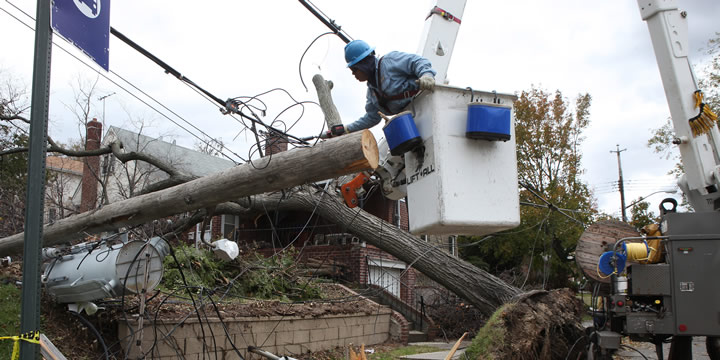Risks Materialized During Sandy

Superstorm Sandy caused significant damage and outages to our customers throughout our service territory. The impact of this coastal storm meant the realization of risks identified by the company’s enterprise risk management program. As these were previously-identified risks, response plans and projects had already been initiated to lessen the number of outages and associated restoration time. However, Superstorm Sandy highlights the need to continue to address these risks moving forward. For this reason, when Con Edison of New York filed its rate case with the Public Service Commission in January 2013, it requested the implementation of programs to strengthen the storm resiliency of its electric infrastructure, as well as implementation of a surcharge mechanism to facilitate cost recovery for additional hardening programs as they may arise in the future.
A Major Storm or Hurricane
We recognize that major storms have the potential to harm our energy delivery systems by means of high winds or severe flooding. These damages could result in widespread outages posing a challenge to our customers in a time of need. Projects exist throughout the different organizations of the company in order to mitigate the impacts of a major storm and avoid the loss of service.
Loss of a Transmission or Area Substation
Our substations send and receive power throughout our system maintaining the reliability of the grid. The loss of a transmission or area substation has the potential to impact the delivery of electricity to a large number of customers. Despite protective measures, flooding at our East 13th Street substation during Superstorm Sandy caused an outage which impacted over 200,000 customers in lower Manhattan. These customers were restored within four days and we are now integrating into our storm hardening plans how to better protect this and other substations.
Shutdown of an Electric Distribution Network
As a precaution, Con Edison preemptively shut down networks in order to avoid extensive damage to company and customer equipment, and to allow company crews to restore power to customers more quickly. While this may cause short duration inconvenience to customers, the benefit of a reduced restoration time made this decision a necessary action in order to prevent a potentially dangerous situation given flooding in the low-lying Battery Park City area.
